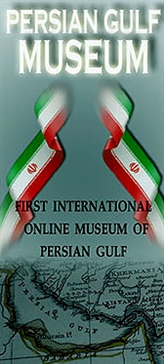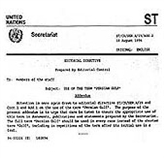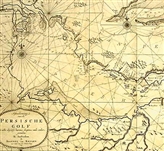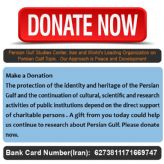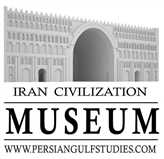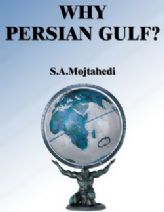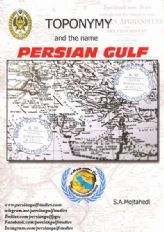The history of Great Persia
Date: 3/9/2014 11:15:02 AM
The history of Great Persia
The history of Iran goes back some three thousand years. Iran (formerly known as Persia) is regarded as one of the cradles of civilisation. Over the last three thousand years it has been ruled by various dynasties. They were not always Iranian and included Macedonian (Alexander was a Macedonian ruler), Arab, Mongol and Turkish dynasties. Iran used to be known in the West as Persia, until on 21 March 1935 Shah Reza Pahlavi officially asked the international community to refer to the country by its proper name, Iran. This is what the Iranians have always called their land. The name Persia comes from the ancient Greek name Persis, which referred to what the Iranians themselves called Pars, an important region in southern Iran. Later European civilisations adopted the name Persia. Iran means ‘land of the Aryans’.
The Achaemenids were the royal house of the ancient Persian Empire and were named after their forefather Achaemenes. The dynasty was founded by Cyrus the Great around 530 BC and ruled an empire until it was conquered by Alexander in 330 BC. The first known mention of the Persians is in an Assyrian inscription of 844 BC. Here the land is referred to by the name Parsu (Parsuash, Parsumash). For the next two centuries the Persians and the Medes were subject to Assyria, Babylonia and another Aryan people, the Scythians. The Parsuash region was annexed to the empire in 719 BC. Eventually the Medes were given control of an autonomous empire and the Persians were made subject to them.
Cyrus II the Great united the divided kingdoms around 559 BC. At that time the Persians were subject to the Median Empire ruled by Cyrus’s grandfather, Astyages. Cyrus mobilised the Persians and led a revolt, driving Astyages from the throne. Cyrus, now the shah of a unified Persian Empire, conquered the rest of Media around 550 BC. Cyrus united the Medes and the Persians, and other conquests soon followed. He captured Lydia in Asia Minor and transferred his troops to Central Asia. Finally, Cyrus marched in triumph through the ancient city of Babylon. After this victory he gained the reputation of being a benevolent conqueror. The empire reached its greatest extent, however, under Darius the Great . He led conquering armies into the Indus valley and Europe. His invasion of Greece was halted at the Battle of Marathon. His son Xerxes also tried to conquer Greece, but he was defeated at the Battle of Salamis in 480 BC.
The Persian Empire of the Achaemenids was the largest and most powerful empire there had ever been. It had a well-organised army, but more importantly the empire was well managed and efficiently administered. Darius the great divided his kingdom into about twenty provinces ruled by satraps or governors, many of whom had a personal connection with him, the shah. He introduced a tax system through which each province contributed money and resources to the central government. He took over the Assyrians’ advanced postal system and expanded it. The use of secret agents was also taken from the Assyrian Empire; they were the Eyes and Ears of the King and kept him informed of the state of affairs in the empire. He built the famous Royal Roads by improving old trade routes. This made it possible to trade with distant countries. He transferred the centre of government from Persia to Susa, close to Babylon and nearer to the heart of the empire. The Persians allowed local cultures to remain intact. This ensured that the conquered peoples felt no need to revolt.
During the time of the Achaemenids Zoroastrianism became the religion of the rulers of Persia and most of the people. Zoroaster, the founder, probably lived around 600 BC. The new religion replaced the worship of the traditional Aryan gods; it emphasised a universal conflict between good and evil gods. Zoroastrianism and its priests, called Magi, were to become an important element in Persian culture. Achaemenid Persia united people and kingdoms from every major civilisation of the time (except China). For the first time people from very different cultures were brought together under a single ruler.
In the end it was Alexander , King of Macedonia, who defeated the Achaemenids in 330 BC. He destroyed the capital city Persepolis. Exploiting the internal weakness of the Persian Empire, Alexander soon conquered all of it. With him came the age of Hellenism, in which Greek culture became dominant and left its mark on the whole of the Middle East.
In 250 BC Arsaces, the leader of a people known as the Parthians, seized power in Persia. The Parthians originally lived in the steppes east of the Caspian Sea, and they built up an empire that extended from the Euphrates to Herat in Afghanistan. They restored the old Achaemenid Empire of Cyrus the Great. Apart from the nomads in the east, who were a constant threat, and Kushan, a Buddhist kingdom in India, Parthia had another powerful opponent — the Roman Empire. In the four centuries of their dominance, the Parthians had close contacts with the neighbouring Romans. Sometimes this took the form of war, when Armenia especially was the bone of contention, but often they traded and maintained good relations, particularly later on. For almost three centuries the Romans and the Parthians fought over Syria, Mesopotamia and Armenia, without ever reaching a lasting solution. In 53 BC, during the reign of Orodes II (56-37 BC), when Parthia’s power was at its height, the Romans suffered a devastating defeat at Carrhae. Despite this victory and the signing of various treaties, the two powers continued to wage war until the 2nd century AD. Parthia fell, however, not because of a foreign enemy but because of an internal revolt. In 226 AD a Persian vassal of the Parthians finally succeeded in throwing off their yoke and founding the Sassanid Empire.
The aim was to restore the ancient Persian Empire and to bring the former provinces back under Persian control. The new Persian Empire was much better organised internally than its Parthian predecessor. It operated a much more aggressive policy towards its neighbour in the west, the Roman Empire. After the rise of Christianity, this confrontation took on a religious dimension, because Persia remained loyal to Zoroastrianism and occasionally persecuted Christians. At the beginning of the 7th century the Sassanids succeeded in conquering large parts of the Byzantine provinces in the Middle East (including Egypt, Palestine, Syria and Anatolia). The new Byzantine emperor, Heraclius, managed with great difficulty to recapture the shrines of Jerusalem, Antioch and Alexandria, and inflicted a severe defeat on the Sassanid Persians. The result was that the two empires drove each other to the point of exhaustion. It was at that moment that a new ‘conqueror’ came on the scene from a totally unexpected quarter: Islam. In 651 the last acknowledged Shahanshah, Yazdagird III of the new Persian Empire, died. The exhausted Sassanid Empire, which was also deeply divided, offered little resistance to the Arabs in the 7th century. Moreover, the ideas of Islam turned out to be fairly compatible with those of Zoroastrianism. The Persians rapidly became Muslims. Eventually the few remaining Parsees (followers of Zoroastrianism) left for the east.
The Arab conquests that began in 637 were completed between 663 and 676 with the annexation of Sistan, modern Afghanistan, and the Sogdian cities of Samarkand and Bukhara. The Caspian provinces Tabaristan (now Mazandaran) and Gilan long retained their independence. As part of the Arabian Empire, Iran was ruled by the governors of Iraq. The Arabs, who brought their internal feuds with them, settled mainly in the north-east province of Khorasan. Conversion to Islam was not particularly encouraged. Iranian Muslims were exempted from certain taxes, but as mawali (Arabic for ‘clients’) of the Arabs they had to accept a subordinate position. The Zoroastrians survived as a religious minority mainly in the south of the country.
The Samanid dynasty ruled in the Khorasan region and parts of Central Asia from 819 to 999. The Samanids promoted a return to old Persian values. As a result they reduced the influence of the Arab Caliph in Baghdad. The Buwayhids ruled mainly in the north and west, around the Caspian Sea. They were later defeated by the Seljuks, a Turkish peope who also occupied most of Iran. Around 990 they converted to Islam and then began a campaign of conquest that took them from Transoxania (in modern Uzbekistan) via Iran to Turkey. By 1040 they had conquered most of Iran. They also captured Baghdad, the capital of the Caliphate, where they took over the functions of the Caliph from 1055. When Malik Shah I died in 1092, the empire fell apart, leaving various small states. Iran remained whole more or less, but around 1150 the Khwarezmids defeated the smaller dynasties in Iran.
The Mongol Empire under Genghis Khan conquered Persia between 1219 and 1224, and entire cities were plundered and destroyed. In 1255 the Mongol Empire was divided into several khanates or principalities. One of them was the Il-Khanate, which came under the rule of Hülegü. He was responsible to his brother Kublai Khan, who was the principal Khan. Hülegü’s successors converted to Islam. Around 1335 the empire disintegrated into various small states. The Safavids ruled Iran from 1501 to 1736 and made shi’ism the state religion. The dynasty had its origins in a Sufi order from Ardebil in Azerbaijan, and was named after Sheik Safi Al-Din (1252-1334). The founder of the Safavid empire was Shah Ismail I, who ruled from 1501 to 1524. Both these rulers spoke a Turkish language. Shah Abbas I the Great strengthened the empire. He made Isfahan his capital, and during his reign the city flourished. At this time the Dutch East India Company had a trading post in Isfahan.
The Qajars were the ruling dynasty from 1796 to 1925. During this period Russia and Britain substantially increased their power in Persia. At the time of the Russo-Persian wars Persia lost various northern territories to Russia, among them the present Azerbaijan. To prevent further Russian expansion, Persia entered into a strategic alliance with Britain, which thus acquired various important commercial concessions, including the right to drill for oil. At the end of the 19th and beginning of the 20th century, Persia was modernised, and in 1906 a parliament was introduced. During the First World War the Ottomans were a threat, and Russia and Britain ‘defended’ Persia and her strategically important oil areas.
